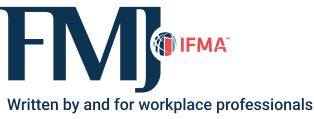Beyond the Big Quit
Why productivity is more than output per unit

The pandemic and current economic pressures, including high inflation, have impacted the way employees work and how they feel about work. Fully understanding the influence and impact these factors have had on the workforce will be elusive, however, some are clear now.
The reasons so many people left their jobs in the current economic environment have been thrust into the spotlight. Workers are frustrated, and in some cases disconnected, and the trend is about more than stagnating wages. They are tired of boring, manual jobs and want to engage more with their roles and their companies. They want to use tools that empower them to be more productive. Supporting employees with the right tools to efficiently manage daily tasks is paramount.
One thing is clear: The Great Resignation shifted some power away from management in favor of workers, particularly edge workers, who typically are a long way from headquarters. These edge workers are generally on the front line, dealing with other employees and customers, and trying to meet their expectations. The tasks they perform are critical to creating value and increasing customer satisfaction. This is especially true in facility management.
Understanding productivity’s impact
Leaders and managers everywhere should keep productivity top of mind while trying to create a workplace that employees embrace. There are three key pillars of productivity to consider:
1. Engagement
What is the value the business creates? Is it something that employees can relate to? Do they understand how their efforts impact the business? Or are their tasks “just a job?” If so, businesses are fighting productivity headwinds that FM leaders are not even aware of.
An engaging workspace that supports productivity demonstrates that leaders are paying attention to employees. This does not need to be a costly interior design exercise (that helps, obviously), but can be as simple as making sure there are quiet areas, engaging spaces, workplaces that individuals can call their own, versus a cubicle farm that people cannot wait to escape from.
How well communicated are the goals of the company? Does each employee know what they need to do, and why, to support those goals? Do they have the right tools in place to perform the various tasks and jobs that support the business? If the answer is “maybe” or “I don’t know,” leaders are not enjoying the benefits of high productivity.
It is crucial to convey the values and output of the business to everyone involved in making it happen so that people are connected to the end goal.
2. Flexibility & personal development
Is the whole person employed or only the pay-for-the-time-put-in person? Companies like Starbucks offer tuition reimbursement benefits for a simple reason: it signals that they are invested in the worker, not just paying an hourly wage for time put in. Workers can be evangelists for businesses outside of when they are putting in their time.
Committing energy to the personal development of employees, whether it is in or outside of work, is invaluable. The result will be happier employees who work harder for their employers as leaders work harder for them.
Team empowerment further develops this relationship, such as employees who are offered flexible work hours, overtime or the ability work from home, when possible and feasible.
3. Support
It is simple: Employees supported by the correct tools to help them with their tasks are going to have higher rates of loyalty and productivity over employees who do not. Are the systems used by workers (edge or otherwise) helpful, easy and support collaboration? Do they power productivity, or do they get in the way?
The quality of the tools provided demonstrates an understanding of ground operations and subtly signals that the organization considers tools that support their workers as critically important to the success of the company. Tools are a way of making otherwise tedious or time-consuming processes easy, fast and reliable, so that teams can focus on adding human and intelligent value to their roles.
Empowering the workforce with the right tools
Workers want to be successful in their roles and advance accordingly in their careers. Technology can now be used to drive both employee engagement and productivity. While many of their end tasks remain manual, how those tasks are assigned, measured and communicated drives productivity across the company and increases collaboration between teammates.
Workflow management and automation solutions are emerging to help businesses design better repetitive, rote processes. Many of these processes are paper-based and can be automated with digital workflow tools. When combined with Internet of Things (IoT) solutions such as sensors, cameras and other smart devices, these workflow platforms empower both edge workers and leaders to collect and leverage actionable, real-time dynamic data. This data can then be unleashed to inform everyone to make better decisions, which, in turn, drives productivity.
Workflow solutions allow jobs to be scheduled so that workers know exactly what task needs to be done, where that task needs to happen, and at what time. By using IoT sensors in conjunction with these tools, jobs can be automatically scheduled or added ad-hoc to ensure the team is addressing the areas that are most urgent and important.
One example of how technology is changing the FM game is simple but holds a lot of weight with employees and visitors across several industries: bathroom cleanliness.
To ensure that a bathroom remains in good condition, most companies post a paper-based schedule on the back of the restroom door, indicating the time and date it was last cleaned, and by whom. At the end of the day, that log is placed in a logbook, ensuring that the record is available if needed.
However, there is no checklist on these manual systems. Was the toilet paper checked or replaced in every stall? Were the trash cans emptied? What if something goes wrong between scheduled cleanings, such as a clogged toilet, an overflowing sink or several stalls without toilet paper? Ad-hoc messes are not on anyone’s schedule to clean up, only scheduled ones, and if the assignment is just to clean the bathroom, steps may get missed. It may take up to an hour before the problem is resolved, leaving a poor impression for employees and guests. What if someone slips on the wet floor before the issue can be resolved?
By moving from a paper-based system to an automated workflow, tasks like reporting an issue and cleaning the bathroom become easier. IoT sensors can measure foot traffic in and out of the bathroom to determine how often it has been used and trigger notification to refill the toilet paper and paper towels after a set number of visitors. Sensors can also detect overflowing toilets and sinks. Once an employee completes the cleaning, they can use their assigned device to record that the task is completed and take time-stamped photos of a clean bathroom. This data can also be used to protect the company against claims of a slippery floor.
Cases like manually tracking bathroom cleaning and related ones, such as cleaning up ad-hoc spills quickly, are inefficient and lead to poor customer experiences and unhappy employees. Both outcomes weaken (over time or immediately) customer and employee loyalty in ways that impact the top and bottom line of the business. New solutions empower employees by marrying IoT sensors that track the number of bathroom visitors using automated workflows that ensure each cleansing step is taken in the right order at the right time. This supports both reactive and predictive maintenance, ensuring issues are resolved much faster than before.
Improving productivity in the FM industry is critical to the success of the company and the edge workers that support it. Companies and leaders who pay attention to the three pillars of productivity, as well as the potential of new technology, will reap the benefits. These no longer simply entail factors such as output per minute compared to hourly wage. Instead, they drive higher productivity, and stronger employee engagement and retention. The pandemic and the subsequent Great Resignation have forced businesses to reflect on these factors. Now is the time to create a more productive and positive environment that empowers employees to go the extra mile.

Mark Self is president and CEO of mpro5 Inc., focused on growing business in North America. He is responsible for creating value for customers in industries including facility management, retail, hospitality, transportation and others. Self holds a master’s degree in management from the Kellogg School of Management at Northwestern University, and a bachelor’s degree in English literature from the University of California, Davis.
Read more on Leadership & Strategy and Career Advancement or related topics Succession Planning and Career Advancement
Explore All FMJ Topics









